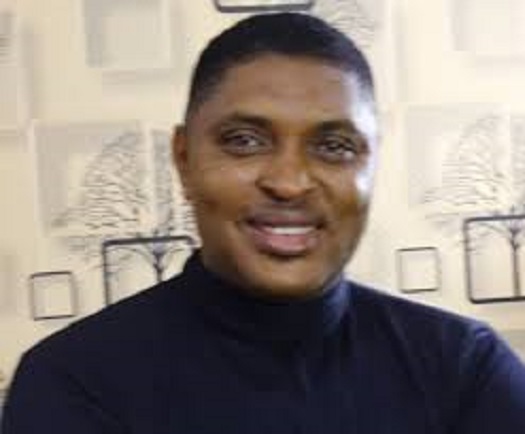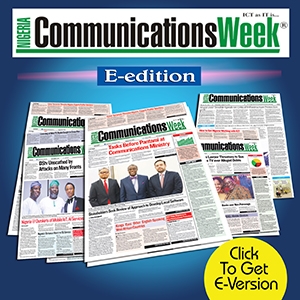Broadcasting
Things you Need to Know about the DStv Eutelsat Star Awards

The DStv Eutelsat Star Awards is back with a bang! This prestigious competition inspires unparalleled innovative thinking among young African generation.
With a once in a lifetime trip for two to Paris and other exciting prizes up for grabs, here’s everything you need to know about Africa’s most innovative and educative award:
- The DStv Eutelsat Star Awards was launched in 2011 across African by MultiChoice Africa in partnership with Eutelsat.
- The competition has two categories – Essay and Poster – and is open to students in secondary schools between the ages of 14 and 19 years.
- Independent judges come together to rate the entries of the students who enter for the competition.
- In the maiden edition of the award in 2011, the Nigerian winners were Chukwuka Ekweani of Zamani College, Kaduna in the essay category while Oluwaseyi Oloyede of Vivian Fowler, College, Lagos emerged winner in the poster category.
- In 2016, Emmanuel Ochenjele emerged as the first Nigerian continental winner in the poster category of the awards.
- Overall essay award get trip for the winning student and their parent/legal guardian to Eutelsat in France and attendance of a rocket launch.
- Eutelsat overall poster award winner gets a trip for the winning student and their parent/legal to the MultiChoice offices in Johannesburg and the South African Space Agency at Hartbeesthoek.
- Eutelsat overall essay school award also gets a DStv installation, including a dish, TV, decoder and free access to the DStv Education Bouquet.
- Poster school award will get a DStv installation, including a dish, TV, decoder and free access to the DStv Education Bouquet.
Be part of this exciting journey by writing a creative essay or designing a poster based on the following topic: “Currently, satellites are being used in a variety of ways but there is always room for expansion and growth. Write an essay or design a poster on areas you believe the full potential of satellites has not yet been tapped into or embraced.”
Hurry now as entries closes this Friday, October 26, 2018. Forms can be obtained from the nearest MultiChoice Office or online via www.dstvstarawards.com
Broadcasting
From Content to Capital: Decoding Africa’s Next Media Boom by Reuben Kalu

In today’s economy, media is not just an amplifier—it is the engine that drives growth, perception, and transformation. The latest PwC Africa Entertainment & Media Outlook 2025–2029 paints a striking picture: Africa’s Entertainment and Media (E&M) industry is evolving faster than most global markets, driven by digital connectivity, mobile-first consumption, and the rise of AI-powered creativity.

For businesses, this is not simply a report—it’s a blueprint for how to harness media’s momentum to dominate their categories. Let’s unpack how African companies, entrepreneurs, and brands can convert this digital energy into market leadership.
- Recognize Media as the New Marketplace
The PwC report underscores a powerful truth: media has become the modern marketplace. With Nigeria’s E&M sector growing at 11.2% in 2024 and projected to sustain a 7.2% CAGR through 2029, digital spaces—streaming, gaming, and social platforms—are where audiences spend their attention, time, and money.
This shift demands that every business—regardless of industry—acts like a media company. Whether you sell fashion, fintech, real estate, or food, your reach, relevance, and revenue now depend on how effectively you create, distribute, and monetize content.
Strategic takeaway:
- Build in-house media capabilities or partner with agencies that can handle storytelling, video, and influencer marketing.
- Treat your brand channels (social media, YouTube, podcast, blog) as primary sales platforms, not just communication tools.
- Focus on content ecosystems, not campaigns—create series, themes, and interactive experiences that build community.
- Harness Connectivity as Your Growth Multiplier
Across Africa, connectivity is the backbone of the digital economy. Nigeria’s 107 million internet users and Kenya’s mobile connections exceeding its population signal a mobile-first revolution. By 2029, connectivity spending will exceed $1.3 trillion globally.
However, PwC notes that in Africa, 81% of digital spend goes to connectivity, leaving less for content and advertising. That’s a challenge—but also an opening. As data becomes cheaper and access expands, the share of wallet will shift toward digital content and advertising, meaning audiences will spend more on streaming, gaming, and branded experiences.
Strategic takeaway:
- Prioritize mobile optimization in all marketing and service delivery—apps, mobile-first websites, SMS commerce, and WhatsApp engagement.
- Invest in digital distribution partnerships (e.g., telco collaborations, OTT tie-ins) that extend your content or product access.
- Anticipate lower connectivity costs by 2026–2027 and plan for scale—prepare campaigns and e-commerce funnels that can capture the surge in new online users.
- Move from Advertising to Audience Ownership
PwC predicts that by 2029, advertising will surpass consumer spending globally, growing at a CAGR of 6.1% compared to 2.0% for direct consumer spending. In Africa, Nigeria will lead with 84% of total ad spend going digital by 2029.
This signals a seismic shift from buying visibility to building owned audiences. Businesses that invest in content-driven communities will outperform those relying solely on paid ads. The next advantage lies in first-party data—understanding your audience through engagement, not just impressions.
Strategic takeaway:
- Create content funnels that turn followers into subscribers, and subscribers into customers.
- Develop loyalty programs and newsletters to build direct relationships and own your audience data.
- Use AI-driven analytics to track engagement patterns, predict purchase intent, and tailor communication per segment.
- Leverage AI for Local Creativity and Scale
Generative AI is transforming the creative landscape. PwC highlights how African startups and media houses are using AI to produce local-language content, personalize recommendations, and streamline production. This means African businesses now have access to global-grade creativity at local-scale costs.
AI can also help smaller brands compete with established players by automating design, optimizing campaigns, and generating culturally relevant content at scale.
Strategic takeaway:
- Use GenAI tools for storytelling—translate product stories into multiple languages, generate localized ad copy, or tailor visuals for regional markets.
- Employ AI chatbots and voice assistants to deliver personalized service experiences in vernacular languages.
- Collaborate with local AI startups to co-create solutions around customer insight, predictive analytics, and ad targeting.
- Tap into Africa’s Youthful Digital Culture
Africa’s greatest media strength lies in its youth. Nigeria, Kenya, and South Africa are home to a vibrant, under-35 population that shapes trends through TikTok, gaming, and streaming. The report shows that video and esports are outpacing traditional TV, with Nigeria expected to lead that shift by 2028.
Brands that align with this youth-driven culture will not only gain relevance but also become part of the new cultural economy—where commerce, creativity, and community converge.
Strategic takeaway:
- Build creator partnerships with micro-influencers who drive local conversation.
- Integrate gaming, music, and entertainment sponsorships into your brand strategy.
- Launch interactive digital experiences—from AR filters to gamified campaigns—that tap into youth participation.
- Blend Live and Digital Experiences
PwC’s analysis reveals a rebound in live events and entertainment, with South Africa’s live music ticket revenue projected to grow at 5.9% CAGR and Nigeria and Kenya following closely. This renaissance, amplified by social media visibility, suggests that audiences crave real experiences enhanced by digital touchpoints.
Businesses can merge physical and digital engagement—what’s now called the “phygital” experience—to deepen brand relationships.
Strategic takeaway:
- Combine in-person events (pop-ups, concerts, trade expos) with digital amplification (live streaming, influencer coverage, AR participation).
- Use QR and NFC technologies at events to collect data and continue post-event engagement.
- Create hybrid loyalty experiences that connect offline participation to online rewards.
- Invest in Local Storytelling and Cultural Relevance
The future of African media will be shaped by local voices telling global stories. PwC highlights how AI and OTT platforms are enabling regional storytelling—from Nollywood’s global streaming success to Kenya’s gaming and music content exports.
This shift means businesses must root their storytelling in local identity while maintaining global standards of quality and accessibility.
Strategic takeaway:
- Build brand narratives that celebrate local culture, creativity, and social impact.
- Partner with content creators and production houses who can express your brand values through music, film, or visual storytelling.
- Use vernacular languages and regional humor to improve engagement and relatability.
- Position for Emerging Market Expansion
The inclusion of Mauritius in the PwC report signals a widening E&M scope—new, smaller markets are emerging fast. As digital infrastructure expands, peripheral markets will become high-growth testing grounds for regional expansion.
Strategic takeaway:
- Identify tier-2 markets (like Ghana, Rwanda, or Mauritius) where early entry can secure leadership.
- Develop scalable, lightweight business models—digital-first services, subscription products, or app-based solutions.
- Use cross-border digital partnerships to distribute content or services seamlessly across Africa.
- Build Agility Around Economic Volatility
PwC warns that currency fluctuations, inflation, and regulatory barriers may temper growth. Yet, agility—backed by data—can turn volatility into opportunity.
Strategic takeaway:
- Diversify revenue channels: mix digital ads, subscription, sponsorship, and e-commerce models.
- Invest in financial resilience through hedging and scenario planning.
- Stay policy-aware—engage regulators and industry bodies early to shape digital and advertising policies.
- Redefine Success: From Reach to Resonance
As media converges with commerce, the goal is no longer just to reach millions—it’s to matter deeply to the right audience. Businesses that use media to tell authentic stories, empower communities, and innovate experiences will define Africa’s next decade of growth.
In the words of PwC’s own summary, Africa’s E&M sector is “fast, focused, and future-ready.” So too must be its businesses.
In Conclusion
The reins of power have shifted—from capital to content, from institutions to individuals, from visibility to engagement.
For African business leaders, the message is clear:
Those who master media will master markets.
The next frontier of competition will not be fought in boardrooms or on billboards—but in newsfeeds, screens, and stories that inspire, connect, and convert.
Broadcasting
Deepfakes: The Next Human Vulnerability for Businesses?

By Ben Jacob, Tech Lead EMEA, Sophos Red Team at Sophos
Synthetic audio and video generation technologies, known as deepfakes, have reached a critical threshold. Once mostly limited to social media entertainment or occasional political manipulation, they are now fully integrated tools in cyberattack tactics.

This shift represents more than a technological evolution; it marks a transformation where human perception itself has become an attack surface. Recognizing a familiar voice or face is no longer a guarantee of authenticity.
In this context, businesses face a threat that relies less on raw technical skill and more on subtle manipulation of human behavior.
Fraud campaigns now exploit cloned voices and manipulated videos to simulate authentic communications, deceiving even the most vigilant employees. In February 2024, an employee at a Hong Kong multinational transferred €24 million after being duped by a deepfake.
The scam succeeded because everything appeared authentic: accent, rhythm, tone… The widespread availability of these tools, thanks to their low cost and accessibility, accelerates the industrialization of such attacks.
A technological threat turned human
Attack simulations conducted with international organizations show that deepfakes are no longer a futuristic hypothesis but an established reality.
A 2024 Anozr Way report projected deepfakes could increase from 500,000 in 2023 to 8 million in 2025.
Deepfakes exploit a rarely anticipated cybersecurity vulnerability: our instinctive trust in human interactions.
Cloned voices impersonate executives; videos generated from public content are embedded in credible scenarios to deceive experienced staff. Beyond technical sophistication, the industrialization of these practices is what should raise alarm.
Voice cloning now requires only a few seconds of publicly available audio, often available via public media such as YouTube or TikTok, allows artificial voices to be generated within minutes at low cost.
These voices are then used in automated campaigns, including mass phone calls conducted by conversational agents simulating convincing human interaction.
This paradigm shift moves the attack vector from IT systems to human behavior, exploiting trust, urgency, and voice recognition.
Identity: the new attack surface
Across recent breaches, including those impacting M&S and JLR, we are witnessing a clear shift in attacker behavior. Adversaries no longer “hack in”, they simply “log in”. They obtain valid credentials through phishing, vishing, and social engineering campaigns, then use them to operate under the radar of traditional defenses.
Deepfakes now extend this pattern by enabling the theft and imitation of identity itself. A cloned voice or AI-generated face can bypass skepticism, convincing employees they are interacting with a trusted colleague or executive.
Identity has become the primary currency of access. As organizations strengthen their technical controls, attackers increasingly exploit human trust as the easiest route inside. This convergence of social engineering and AI-driven impersonation means the next wave of attacks won’t just target vulnerabilities in IT systems, they’ll target people.
Awareness, doubt, and verification: the new pillars of cybersecurity
Most companies have focused cybersecurity efforts on protecting systems and data. However, with deepfakes, humans become the entry point. These attacks exploit a major
gap in current cybersecurity: the lack of verification reflexes in voice and video communications. While most organizations run phishing awareness campaigns via email, awareness of deepfakes remains minimal.
Unlike phishing, now well understood, falsified calls or video conferences remain largely underestimated. The realism of deepfakes, especially under stress or urgency, obscures subtle cues that could raise alarms.
Detection depends on noticing small inconsistencies such as timing delays or slightly robotic speech, signs that are easy to miss during a busy day. Organizations need to establish verification practices that go beyond technical controls. This includes contextual questions that only legitimate colleagues would know, answers that change regularly (e.g., “When did we last meet?”), or confirmation through secondary channels. “Trust but verify” has long been a motto in cybersecurity, but identity-based attacks such as deepfakes make it more relevant than ever.
“Robocalls,” already widely used to target individuals with daily AI-driven calls, can also be exploited by adversaries for illegitimate purposes. Here too, slight timing delays and intonation are key indicators to identify.
Therefore, team awareness can no longer be limited to email. It must include these new scenarios, train employees to recognize manipulations, and foster a culture of systematic verification. Trust must no longer be implicit, even when it seems natural.
The threat of deepfakes can no longer be seen as a technological curiosity or niche risk. It fundamentally challenges how companies manage trust, decision traceability, and communication security.
Organizations must integrate these concerns into governance: crisis simulations, verification protocols, redundant information channels, and continuous training. More than a technological response, this requires an organizational, cognitive, and cultural approach. Against a digital illusion that relies on familiarity, only active vigilance can prevent the next attack from coming… through the CEO’s voice.
Broadcasting
AHC Awareness’25: Tackling misinformation key to protecting community health

Awba-Ofemili Development Union (ADU) Health Committee has called for greater vigilance against health-related misinformation, warning that myths and falsehoods about diseases like Buruli Ulcer (Elu-Ulee) could undermine community health development.

This call was made following the successful Awba-Ofemili Community Health Awareness Campaign 2025, themed “Buruli Ulcer (Elu-Ulee): Know the Signs, Stop the Spread,” held on Thursday, October 23, 2025, at the Civic Centre, Awba-Ofemili.
Speaking at the event, Ogbuefi (Sir) Remmy Nweke, Chairman of the ADU Health Committee (AHC) and Convener of the Awba-Ofemili Health Volunteers Team (AHVT), emphasized that misinformation remains one of the biggest threats to public health progress.
“When people rely on rumours or reject scientific advice, diseases spread faster, lives are lost, and development slows down. Our campaign reinforces that knowledge saves lives, not fear or myths,” he said.
The campaign, organized in collaboration with the Office of the President-General, Awba-Ofemili Development Union (ADU), the Nigerian Red Cross Society (Anambra State Branch), and the Anambra State Primary Health Care Development Agency (ASPHCDA), featured health talks, demonstrations, and free medical checks for residents. Participants were also educated on the causes, symptoms, and prevention of Buruli Ulcer, a neglected tropical disease that affects the skin and soft tissues.
The awareness programme further witnessed the donation of first aid boxes to community institutions and the establishment of Red Cross chapters in local schools, including Community Secondary School, Awba-Ofemili, a move aimed at promoting a culture of health emergency preparedness among the youth.
According to Nweke, the day’s success demonstrates what can be achieved through collaboration and trust between health professionals, community leaders, and residents. He commended the ADU leadership, partners, and volunteers for “turning a grassroots idea into a model for community health empowerment.”
He further cautioned that misinformation, whether from social media, traditional misconceptions, or word of mouth, could easily reverse gains made in public health.
“We must replace rumours with verified knowledge. Every household must become a source of truth, not fear. This is how we can build a healthier and more resilient Awba-Ofemili,” he stressed.
The event drew participation from medical experts, Red Cross educators, community leaders, teachers, and students, all of whom pledged to carry the campaign message — “Know the Signs, Stop the Spread” into their respective quarters.
The Awba-Ofemili Health Committee (AHC) reaffirmed its commitment to sustaining community health education through partnerships, outreach, and follow-up programmes.

 Telecom2 days ago
Telecom2 days agoMeta, NDPC to Finalize $32.8m Data Privacy Settlement Terms November 3

 E-Financial2 days ago
E-Financial2 days agoSEC Says Nigerians Have Lost N316Bn to Ponzi Schemes

 E-Business2 days ago
E-Business2 days agoBuilding Trust, Accelerating Growth: Securing Africa’s Generative AI Future

 E-Business2 days ago
E-Business2 days agoCybersecurity Firm Shares a Guide to Deleting your Digital Footprint from the Internet

 General News2 days ago
General News2 days agoPrince Nnamdi Ekeh, Oxford-Trained Tech Whizkid , CEO of Konga group, Honoured With Forbes and EuroKnowledge Award

 Telecom2 days ago
Telecom2 days agoTransforming Africa: NITDA DG Makes Urgent Call for Digital Investment

 General News2 days ago
General News2 days agoNIPR Launches Annual PRICE Awards, Ceremony Set for December 7, 2025

 E-Financial2 days ago
E-Financial2 days agoStandard Chartered Affirms Full Compliance with CBN’s N200Bn Capital Rule

























